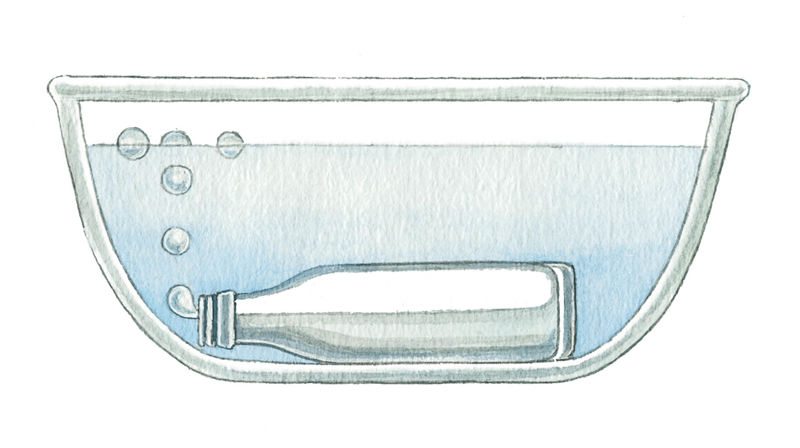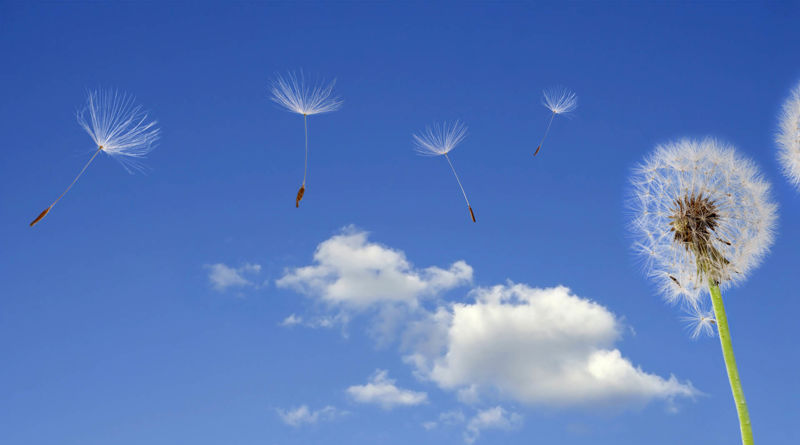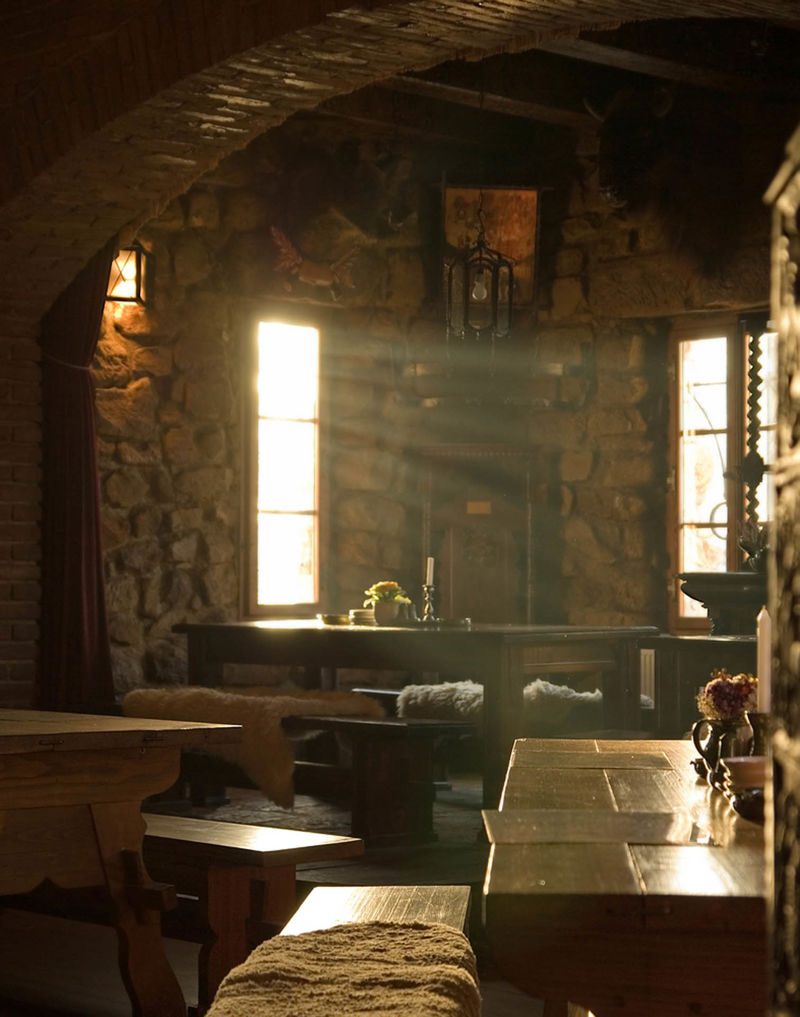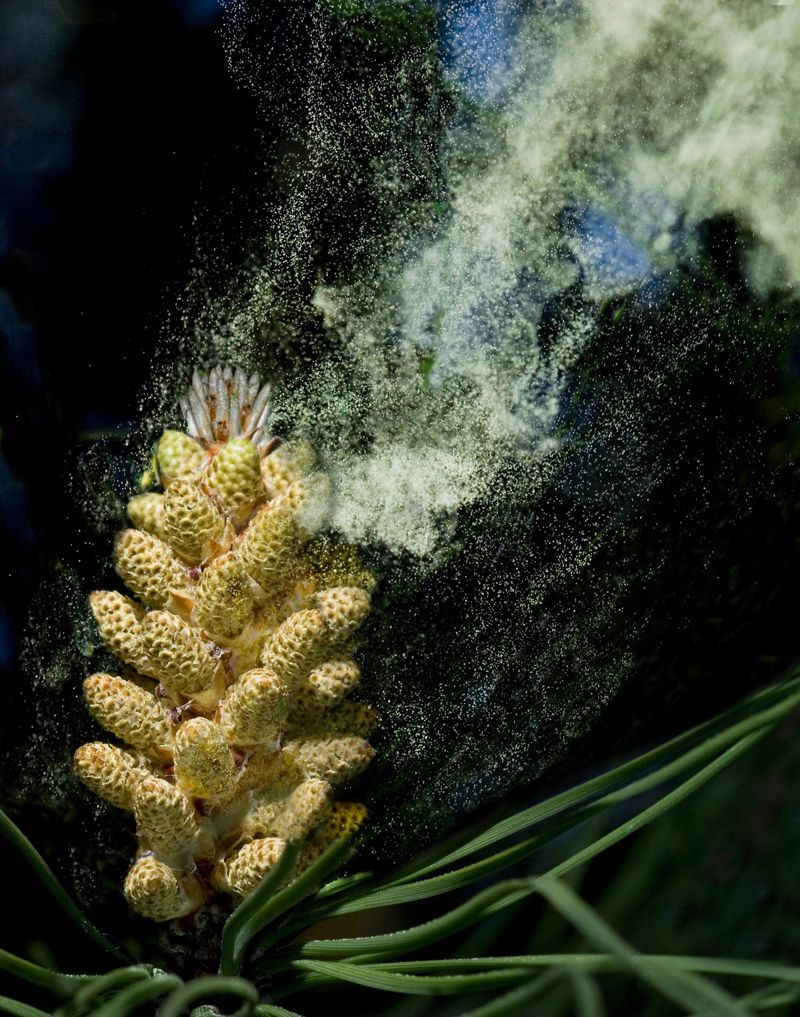Where can we find air?
There is air all around us: outdoors, in the classroom, and in an empty dish. We usually do not see or smell air because clean air is transparent and odourless. However, we can feel the movement of the air, hear the wind rumble in the leaves, and see how the storm wind blows the sea waves.
Surely you have made air "visible" yourself. If you put an empty bottle without a cap underwater, bubbles will come out. In reality, it is the simplest scientific experiment. Unlike a normal game, an experiment always answers a question. If we ask the question, "Is the bottle empty?" before putting the bottle underwater, the game has turned into a scientific experiment. This gives us the answer: the bottle is not empty. There is something in the bottle that can be considered air, but scientists always need accuracy. To be sure that there was air in the bottle, we should learn more about the properties of air.
Think!
- What other ways do we have to produce air bubbles?
- Air is a mixture of gases that surrounds Earth.
- Air is transparent and odorless.
- Air can be seen as bubbles in liquids.
- Wind is moving air.
Air is a mixture of gases
Air is a gas. Specifically - it is a mixture of gases. Air consists mainly of molecules of two substances: nitrogen and oxygen.
There are small amounts of other gases in the air. One of these is carbon dioxide, which is added to the atmosphere by many living organisms exhaling, and when fuels are burned. Plants need carbon dioxide in the air to grow. Combustion such as the burning of fuels, forest fires, and volcanic eruptions, produce carbon dioxide. Therefore, the amount of carbon dioxide in the air fluctuates a little.
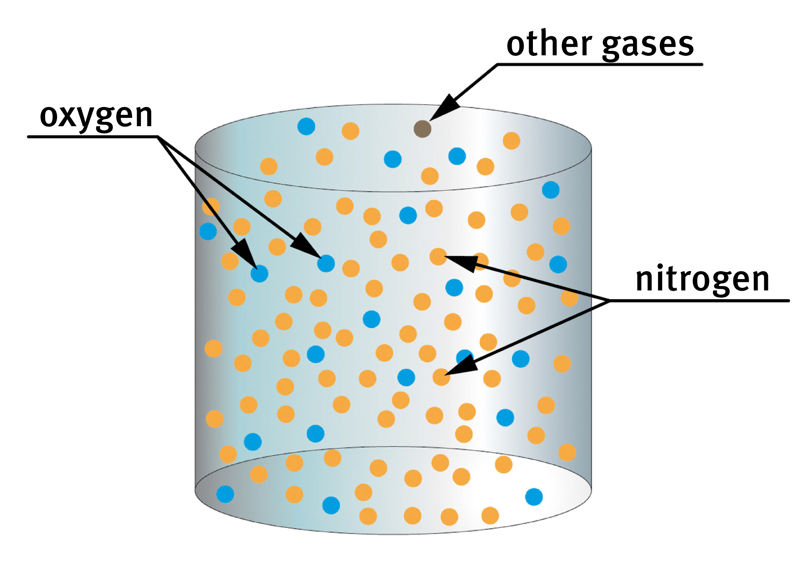
There is always water in the air. In most cases, evaporated water molecules are evenly spread out between other molecules. When combined together, they may form small water droplets or ice crystals. They also make up the clouds.
The most common gas in the air is, there is about four times lessin the air. There is also someandin the air.
There is dust in the air
You may have seen small particles in the beams of light shining into the room. They rise and fall, occasionally landing on the room's floor and furniture. In the dust, you can find hair and debris, tiny grains of sand, soot, ash, and much more that have fallen off all sorts of things. The moving air carries dust particles with it, so some dust particles are carried into our rooms from who knows how far away.
Dust can also include particles that cause shortness of breath, itching, or even fever in many people. Hypersensitivity to certain substances is called an allergy. Substances that cause allergies may fly in the air; most often allergic reactions are caused by plant pollen.
- Cat hair
- Pollen
- Chocolate
Earth is surrounded by the atmosphere
Earth is surrounded by a layer of air called the atmosphere. It is as if our globe was located inside a larger, air-filled sphere. This sphere of air rotates and orbits along with the Earth.
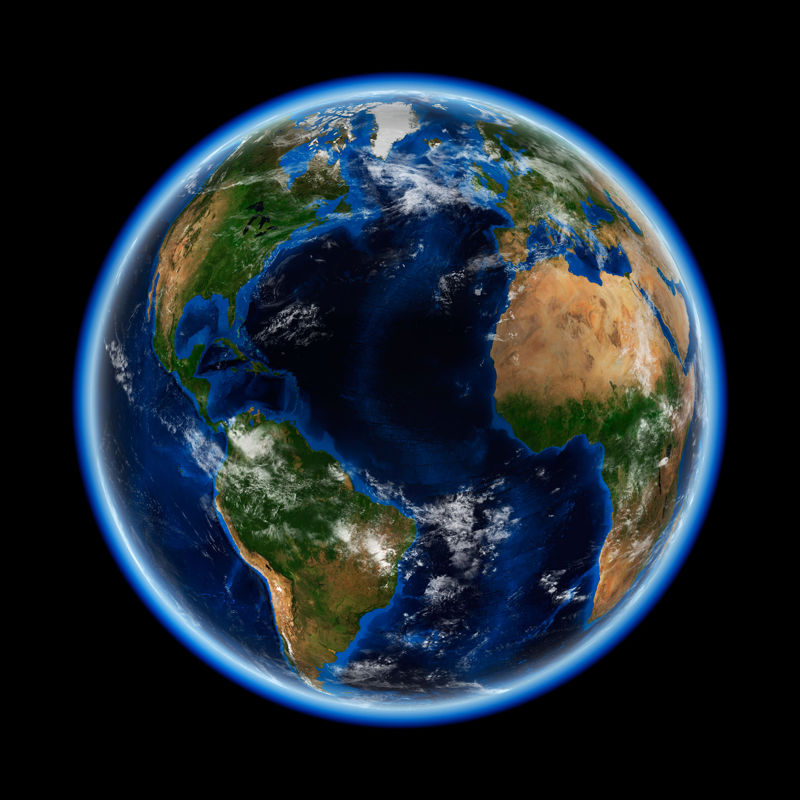
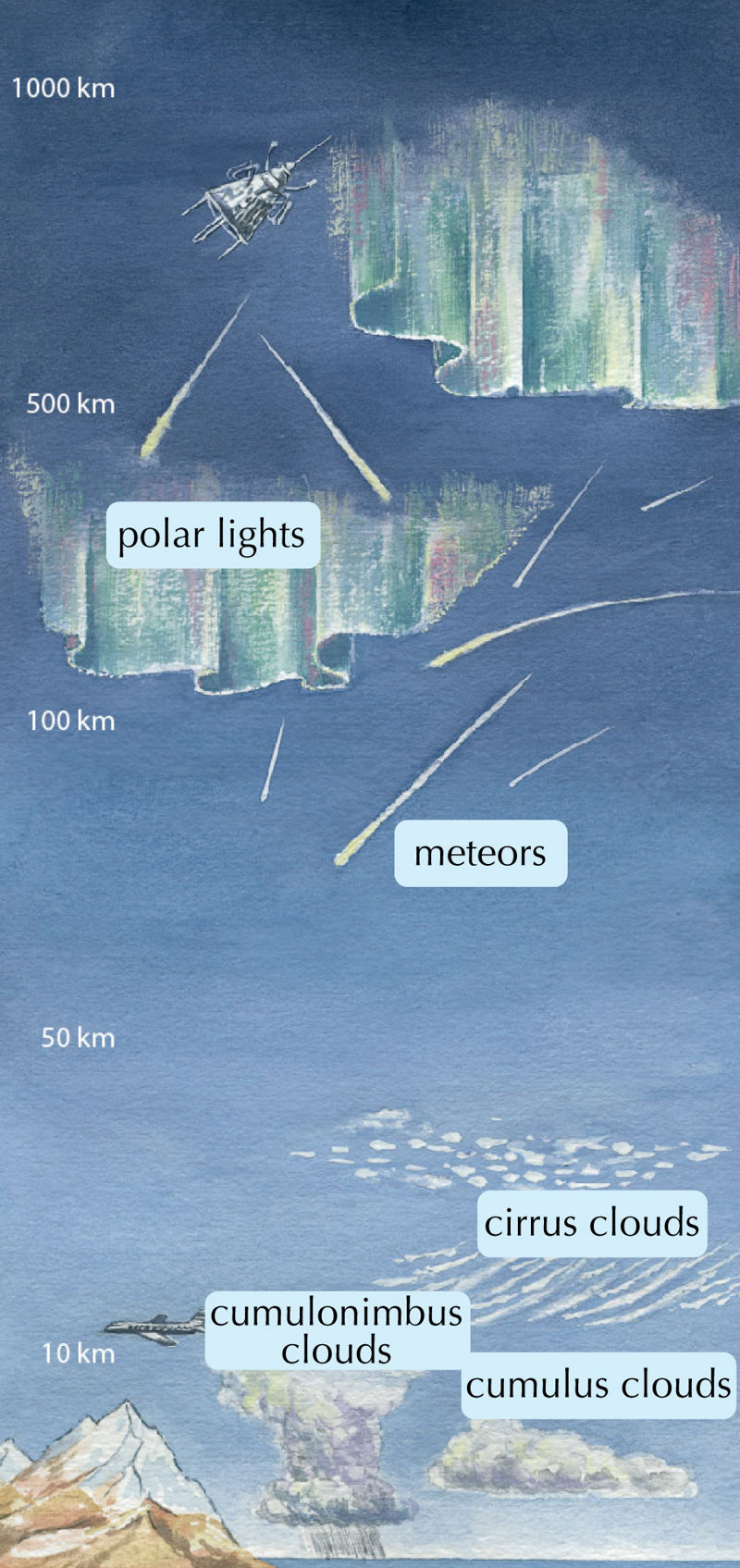
Bonus: Not all places have air
We are used to the fact that air surrounds us everywhere. The planes stay in the sky because they are carried by air. The layer of air remains around the Earth because Earth's gravity pulls all bodies toward it. The farther from Earth, the smaller this force is. Consequently, there is a limit somewhere where the Earth's gravity is no longer strong enough to hold air particles.
A dense gas layer usually surrounds other larger celestial bodies as well, but this is different from our air. There is no air between the stars and planets, although there are particles and sparse cosmic dust.
The layer of air that surrounds Earth is called the .
It can reach as far as km.
How did the atmosphere on Earth form?
It is estimated that 4 to 5 billion years ago, a boiling, bubbling, fiery molten rock formed the interior of the Earth. The heavier elements (iron and nickel) formed the Earth's solid core, and the lighter elements rose to the surface. There is less pressure and heat away from the core, so a crust formed, but closer to the core there is still a lot of hot liquid rock. There used to be a lot more volcanoes all over the globe, and where Earth's crust was thinner, liquid rock and gas erupted from these volcanoes onto the Earth's surface.
There was no atmosphere yet. Instead, a thin layer of cosmic dust left over from the formation of the planets circulated the Earth. The Earth's first atmosphere was likely made up of the gases from the volcanoes: nitrogen, carbon dioxide, hydrogen, and water vapour. The Sun is at the perfect distance from the Earth so that water will condense and form oceans, but won't freeze entirely. Then, radiation coming from the Sun caused water to split into oxygen and hydrogen. The hydrogen escaped back into space, but the oxygen began to fill the atmosphere. Tiny cyanobacteria also helped by using the Sun's energy to consume carbon dioxide and release oxygen (like plants). This is how an oxygen-rich atmosphere developed. There used to be mostly tiny organisms that didn't need oxygen, but as the oxygen slowly filled the air, those organisms were poisoned by it, and were replaced by life that needed oxygen.
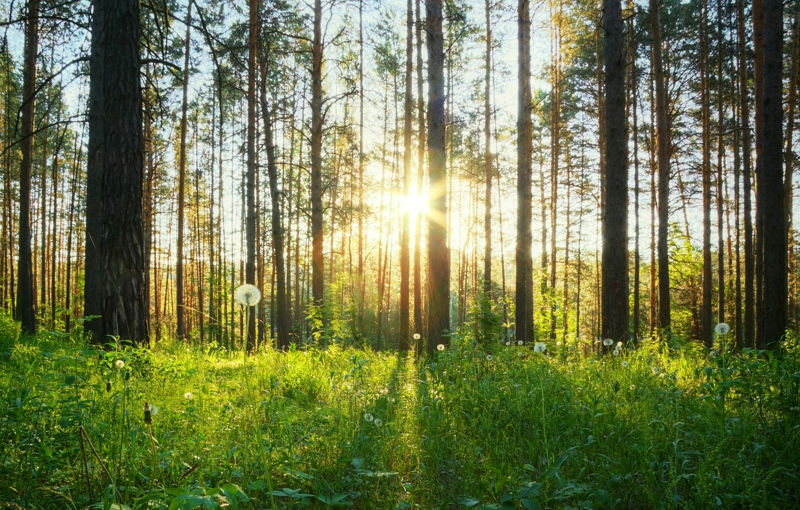
- Earth's atmosphere has always been exactly the same.
- After Earth was formed, it was immediately surrounded by an oxygen-rich atmosphere.
- The first atmosphere of Earth probably formed due to volcanic eruptions.
- Earth's atmosphere got oxygen rich thanks to producers.
Important terms
- air – a mixture of gases that surrounds the Earth
- atmosphere – the layer of air that surrounds the Earth
- carbon dioxide – a gas contained in the air which is used by plants to grow
- oxygen – a gas contained in the air which organisms need to breathe
- nitrogen – a gas that makes up most of the air
I now know that…
There is air all around us. Clean air is transparent and odourless. The air layer around Earth is called the atmosphere.
